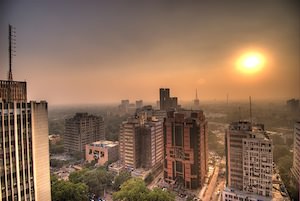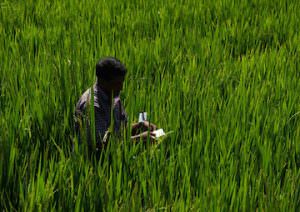How Can Cities Save Themselves? (Video)
A new report by a trio of British research and development groups surveys some of the world’s fastest-growing cities with an eye to the vulnerabilities they will face as global warming raises the sea level and temperatures.
A new report by a trio of British research and development groups surveys some of the world’s fastest-growing cities with an eye to the vulnerabilities they will face as global warming raises the sea level and temperatures.
“More than half of the world’s population already live in cities and this is expected to reach 75 percent by 2050,” say researchers with the Department of International Development, Atkins and the University College London’s Development Planning Unit, the three groups responsible for the study. The concentration of human life in the world’s metropolitan areas appears alongside an intense demand for resources. “Cities occupy only 2 percent of the earth’s land, yet account for 60 to 80 percent of energy consumption and 75 percent of carbon emissions,” the researchers say.
The societal costs of climate change for urban dwellers is staggering. For instance, $418 million is the expected annual price of replacing the ecosystem services provided by the open green spaces in Durban, South Africa. That’s 38 percent of the city’s total budget. Forty-four million people, many of them located in urban areas, fell into poverty in the second half of 2010 when the price of key foods shot up.
Such predicaments are expected to disproportionately threaten the developing world, where 95 percent of urban expansion in the coming decades is projected to occur within conditions of extensive poverty. “[J]ust in India alone,” the authors report, “nearly 70 million people still live in multidimensional poverty within the 59 cities with populations in excess of 750,000,” leaving “a significant number of people highly vulnerable to the stresses and shocks associated with climate hazards, resource scarcities, and degradation of ecosystems such as forests.”
The report categorizes each city studied with one or more types of risks:
1. Energy intensive cities with significant carbon footprints 2. Cities with major climate hazards 3. Cities with risks to regional support systems (such as water and food systems, and risks to natural habitat) 4. Cities facing multiple risks 5. Cities with a low current risk profile.
The ambitiously named “Future Proofing Cities” report “is aimed at any organization or individual with a role in helping shape the cities of the future.” Its authors appear to assume that communities can prepare for the deck of wild cards that will be thrown at them at the terrifying, accelerating pace at which global warming will advance. Given the runaway rate of worldwide fossil fuel-based industrial development, is this assumption reasonable? If we’re past the point of preventing climate change, as many scientists believe, can we prepare for the future without radically reducing our population and changing the way we consume resources? And why are we talking about preparing for something that appears by definition to be impossible to prepare for with any degree of certainty as to its outcome?
Even if human beings were capable of cordoning off some part of the planet that could remain habitable as ecosystems deteriorate, could they count on the same global leaders who have known about the problem for decades to do so? If U.S. climate envoy Todd Stern’s statement to a reporter (first video below) is any indicator, the answer appears to be no. The report’s authors state clearly that “there is an important — but closing — window of opportunity for many cities to act now before they are locked into unsustainable and unsuitable development pathways.”
Barring a radical change of behavior on the part of our leaders, studies that assess the risks of living in particular cities may be best used by individuals looking to determine where they should move their friends and families before the horror begins to descend, provided that they have the means to do so.
— Posted by Alexander Reed Kelly.
Democracy Now!:
Your support matters…Independent journalism is under threat and overshadowed by heavily funded mainstream media.
You can help level the playing field. Become a member.
Your tax-deductible contribution keeps us digging beneath the headlines to give you thought-provoking, investigative reporting and analysis that unearths what's really happening- without compromise.
Give today to support our courageous, independent journalists.







